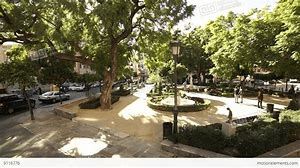
Evolutionary Change and Organizational Innovation: Implications for Coaches and Their Leader Clients
Thus we find that temporary dominance and centralization will distort the open boundaries described by Friedman. The Power Law calls for new perspectives regarding the migration of ideas, people, products and services in our 21st Century world. We find the promise of diffusion and equity via the Flat World tempered by the challenge of temporary (or long-term) dominance and centralization in the global marketplace.
Applications
In order to promote organizational innovation, the coach should encourage her leader client to focus on the creation, identification, clarification and/or institutional-embedding of mission, vision, values and social purposes. A coach should also encourage and guide her client in the appreciation, honoring, strengthening and use of the existing culture within their organization, recognizing its value as a source of stability and coherence in their organization. Furthermore, the coach should encourage her client to gain a cosmopolitan perspective (learning about and visiting other organizations and geographic regions), as well as encouraging her client to find ways for other members of their organization (especially mid-managers) to gain this cosmopolitan perspective. The coach should also help her client recognize the need for contingency planning in their organization in response to the rapid, complex, and unpredictable Power Law changes that can occur in the marketplace and environment in which their organization operates.
Size and Deviant Impact
If the population of a specific species is very large then evolution is unlikely to occur, for in a large population there is an averaging out of differences among members of any one species. If the community is small then, according to Hardy-Weinberg, any differences will make a big difference.
Implications
Very big organizations tend to swallow innovations. Rosabeth Kanter (1990) wrote about this many years ago when she described the challenge of teaching giants (big organizations) to dance. She noted that there is a pervasive tendency for large organizations to be preservation-seeking bureaucracies. Unfortunately, this tendency is counterproductive in our volatile 21st Century world. As Kanter prophetically noted, large organizations must become more entrepreneurial and less bureaucratic if they are to survive. They must become focused, fast, friendly and flexible. These organizations, in other words, need to be able to dance—and this seems to be ironically appropriate, given that they must survive in what Scott Page (Miller and Page, 2007; Page, 2011) describes as the Dancing Landscapes in which many of these organizations now operate.
The preservation-seeking bureaucracies described by Kanter seem to evolve from several fundamental principles regarding the size of systems. We have known for many years that an increasingly large proportion of a system’s resources (people, money, energy, conversation) goes into the maintenance functions of this system, as it grows larger (and as it grows older). As I noted in The Postmodern Organization (Bergquist, 1993), this general principle regarding systems can be specifically applied to organizations. A small organization will tend to devote a large percentage of its resources to the generation of specific products or services—whether it is producing chairs or offering hospitality services.
- Posted by Bill Bergquist
- On September 15, 2012
- 0 Comment

Leave Reply